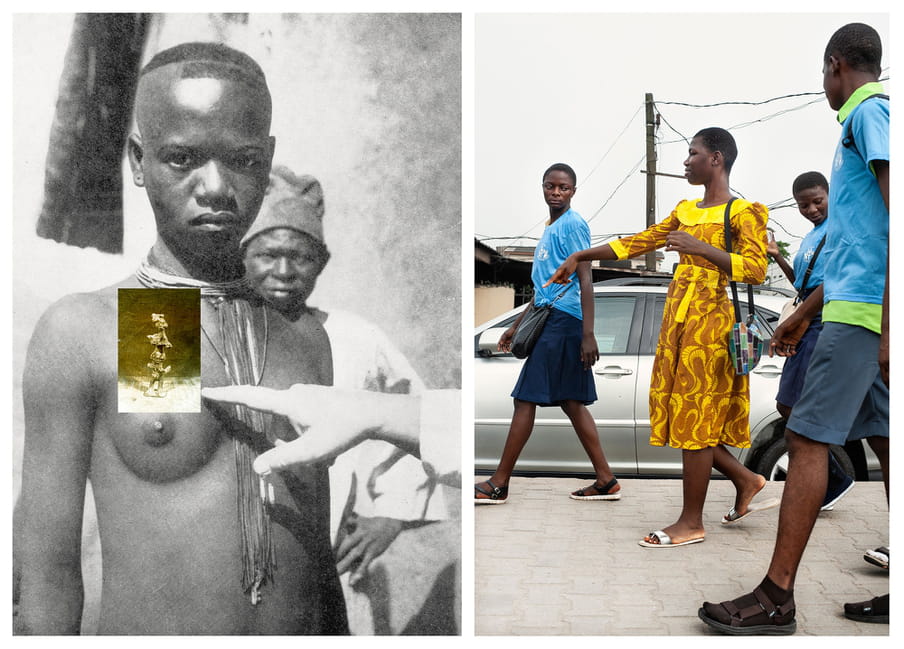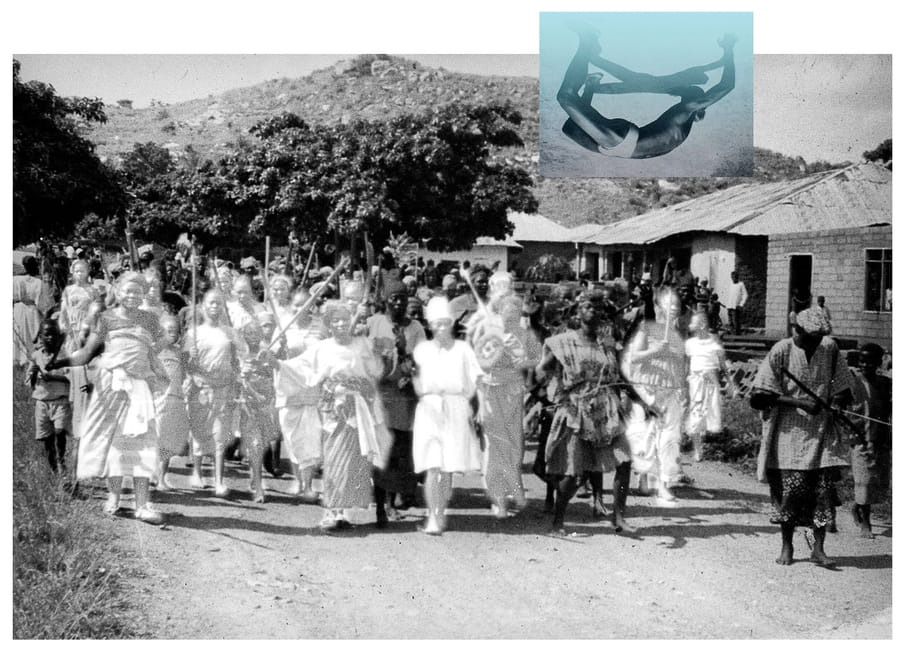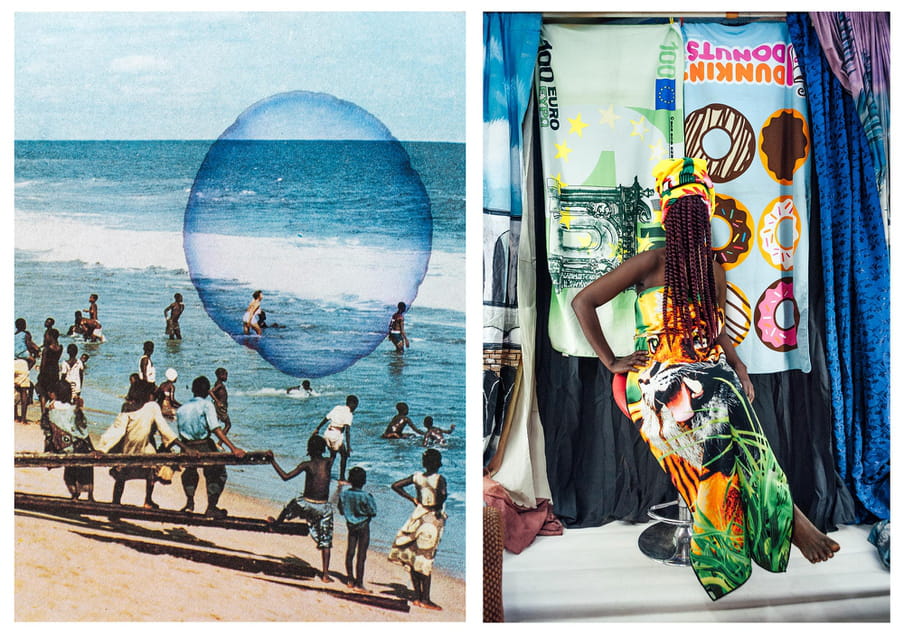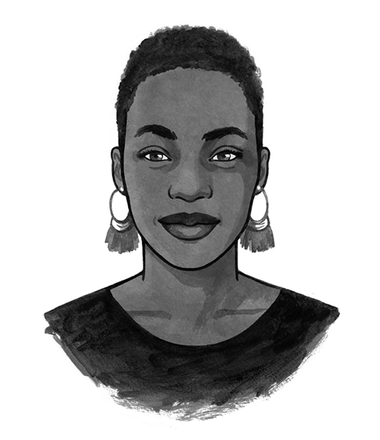I was about seven years old the first time I watched a heaving mass of people – maybe 50, maybe 100 – set a person on fire.
I stood at the huge windows of my mother’s 5th floor office, riveted even though my entire body was shaking, as the person was chased down, grabbed and brutally beaten. When a tyre materialised and was placed around his neck, I couldn’t tell where it had come from. Petrol – a commodity that regularly becomes so scarce in Nigeria that people sometimes sleep in queues in front of filling stations – also appeared as if by magic.
In this memory there is no sound; only motion. As the person tried to escape the fire engulfing his body, self-appointed protectors of the mob beat him back with sticks. Eventually he stopped running, then stopped writhing, then stopped moving.
I don’t remember overhearing any conversations about why this man was burnt alive, in broad daylight, at a busy intersection in a business district. Still, if I had asked any of the people who did it why they’d killed him, they would’ve told me in a matter-of-fact way, as if the right to fair hearing didn’t exist:
“He be tief.”
Perhaps he had stolen someone’s purse, or snuck into one of the office buildings to lift something or the other, or had just been standing in the wrong place when someone nearby shouted “olè!". In any case, even if there had been a theft, it didn’t occur to anyone to give the man a chance to defend himself, tell his side of the story, or complicate their appetite for violence with a fuller picture of his circumstances. He had been cast as a danger to the community’s peace. Nothing more needed to be said.

Metres away from the site of the burning, there was a metal kiosk with POLICE printed on all four sides of its roof. Inside it, a man in the heat-absorbing, all-black Nigeria Police Force uniform watched the whole thing.
Later on as we drove home, my mother caught sight of the scene and instructed me, in a sharp voice, to look away. It was too late to take her advice then, but I did look away from every charred corpse I ever saw after that. Years later, when I heard the story of the Aluu Four – Ugonna Obuzor, Toku Lloyd, Chiadika Biringa and Tekena Elkanah – who were murdered in the same way as the man that I watched burn from that 5th floor window, I immediately knew what had happened.
The four University of Port Harcourt students had gone to the nearby village of Aluu to collect some money that was owed to one of them. Somehow, a rumour started that they were thieves. A mob gathered and, by the end of the day, they had gone from four promising young men to a viral cautionary tale.
Language and voice are tools of power: from the right (or wrong) quarters, something as seemingly benign as words can put people’s lives and wellbeing on the line
As always, it had started with somebody shouting “thief!”, inspiring fear and anger in the hearts of everyone within earshot, and making it impossible for the accused to speak up or defend themselves from the reprisal that was sure to follow.
Violence that hinges on the act of labelling someone dangerous doesn’t only exist in my memory. We see it play out all the time: when unarmed black people in the US are called "scary" after being shot, for example; or when the Nigerian government claims peaceful protesters are "hoodlums" or "insurgents"; or when trans girls and women are painted as a looming danger for just living their lives.
Language and voice are tools of power: from the right (or wrong) quarters, something as seemingly benign as words can put people’s lives and wellbeing on the line. And in almost every instance, the act of making people unsafe begins with redefining them as a threat.
When we have power over others, whether due to structural advantages or temporary situational dynamics, we can use that power to enact a dynamic of domination and reframe people’s identities. In doing so, we set in motion a domino effect that often leads to violence against such people.

A dangerous man in a dress
In April 2017, the most famous African woman alive implied that trans women are men who one day decide they want to wear dresses and make up; that they belong to a separate category that has little bearing on womanhood, and that people generally pretend trans women’s experiences are identical to those of cis women.
None of these things are true, of course, but her words sparked a firestorm of debate across the world, including in the digital circles where young Nigerian feminists had until that point been pushing the conversation around gender in progressive directions. Trans women responded to her in large numbers, with Laverne Cox, also a famous woman of African descent, saying, “The irony of my life is: prior to transition I was called a girl, and after, I am often called a man.”
Three years later, another hugely famous cisgender woman writer came forward with even bolder assertions. Not only do people pretend trans women have the same experiences as cis women, she argued, trans women are also a threat to "biological" women. Without making a clear link between the issues, she authoritatively conflated mental illness and gender dysphoria, made claims like "there’s been a 4400% increase in transition rates" and "60-90% of trans teens outgrow their dysphoria" without citation or sources, and asserted that protecting trans women’s access to "single-sex" spaces puts cis women and girls at risk of harm committed by "any and all men".
Three months after publishing this essay, this author released a new novel under her pseudonym, Robert Galbraith. It includes a serial killer character: a cis man who sometimes dresses in a woman’s wig and coat to lure women to their deaths. This book sold 65,000 copies in its first five days, "the biggest single-week sale for any Galbraith title."
Two weeks ago, the claims by these two otherwise quite astute women came together in an unholy union when Chimamanda Adichie described JK Rowling’s 4,000-word essay of half-truths and transphobic dog-whistles as “perfectly reasonable”.

The man in a dress is a bogeyman
Cis women’s transphobia is most often expressed by talking about the dangers posed specifically by trans women’s rights and womanhood. These dangers, however, are not based in the observable realities of the trans rights movement.
Transmisogynistic talking points are often so similar because exaggerating and even fabricating the danger posed by trans women can offer cis women a (false) sense of power and control in patriarchal societies. It’s also important to mention that, because cis women experience systemic gendered violence, many of us have a very hard time admitting that we too can maintain many forms of gendered violence. This includes the kinds experienced by women doing domestic work, undocumented migrant women, or trans women.
When feminists say “men are dangerous”, the claim is based on historical, communal and personal experiences of gendered violence overwhelmingly committed by cisgender men. We say this because we ourselves have been harmed by cis men, or to support women known and unknown to us who have experienced such violence. In the most theoretical instances, we say "men are dangerous" because there is a need to name un- or under-addressed gender-based violence, in order to forestall the possibility of more women experiencing it.
When exclusionary feminists say trans women are dangerous, however, the claim isn’t based on such experiences of widespread, socially accepted harm committed against cis women by trans women. Instead, it’s based on a fantasy of being under siege due to trans rights being actualised. An example is the claim that women’s spaces, such as gendered public toilets, are made unsafe for cis women and girls when trans women use them – despite a complete lack of evidence that this is the case.
Cisgender feminists frame trans women as a threat in a system where all women are at risk because it allows them to stretch the truth about who is actually harming them even as they harm others. Ultimately, trans exclusionary feminists are admitting their unwillingness to stop thinking of gender as fixed, inescapable destiny. In using binary patriarchal logic to scapegoat trans women, they forget that it is this same logic that maintains cis women’s oppression as well.

I will tell you who I am
There is a phrase that captures the hubris central to the Nigerian psyche better than any other. On any given day you can hear “Do you know who I am?!” in traffic, in a banking hall, in a parking lot, or even, in the case of the last time I heard it, over dinner at a mid-range restaurant. The shouting man got angry with the waiter for implying that he couldn’t pay his bill and added, for good effect, “even if it is one million naira, I will pay it without blinking!”
The ability to safely announce who you are to the world isn’t one that all of us, Nigerian or not, can take for granted. This is especially true in instances where power is unevenly distributed, whether momentarily as in the case of the man who I watched burn, or structurally, as in the case of trans women.
Actively denying people the space to define themselves, and/or to reject misrepresentation, often precedes other kinds of harm. Whether we shout people down when they try to tell us who they are, or insistently speak over them in polished, "reasonable" tones, it creates the same enabling environment. If someone can be effectively dehumanised using language, that’s a signal that they can be dehumanised in other ways.
Women are women, and they can be black, white, indigenous, straight, queer, rich, poor, pregnant, menopausal, abled, disabled, cis, trans or any other qualifier that makes their experience of womanhood less general and more specific. The same applies to men and manhood, even though trans men and other gender non-conforming people are almost always erased in these debates.
The socially determined category of "woman" as the fixed binary opposite of "man", based on reproductive characteristics or chromosomal makeup, is not one that has existed unchanged throughout time and space. Evidence of this exists, for example, in practices that persist even in Adichie’s native Igbo land.
The gender binary as we now understand it, including its impacts on family, reproduction and other facets of identity and community, has colonial roots which were violently planted in non-European cultures around the world. To this day, all women – not just trans women – continue to bear the consequences of the historically exclusionary, Eurocentric idea of "real" womanhood.
When cis white women in the western world fought for the right to vote, they were demonised for threatening the "natural order" of the gender binary. When enslaved cis women in the US fought for the recognition of black people’s humanity via abolition, they highlighted how their womanhood was denied under slavery.

When feminists fight for the right to work, live independently, have bodily autonomy and be safe from gendered violence, we are expanding collective understandings of what "womanhood" is, so as to make the world safer for all women.
Most people are cisgender. That doesn’t mean there is a universal cisgender experience, or that cis experiences place boundaries around gender that can be effectively policed. Instead of pitting cis and trans experiences against each other for the sake of maintaining an oppressive status quo, we can simply respect trans women’s identity as women in a world that has an insatiable appetite for violence against anyone who can be stripped of their identity and, by extension, their humanity.
Respecting, listening to and learning from trans people offers us all the opportunity to embrace the diversity of human experiences and to understand the social construct known as gender even better. Denying trans women’s material realities and life-affirming narratives not only implies that they deserve the harm that awaits them at almost every turn but also that there is only one narrative of gendered possibilities that is legitimate – that of the dominant group.
Respecting, listening to and learning from trans people’s experiences offers us all the opportunity to embrace the diversity of human experiences
Feminists in particular all know where else we’ve seen such a claim, and cisgender feminists have been resisting that claim for generations. We shouldn’t change our tune now, just because there is a group whose marginalisation we can also participate in. To do so would be to expose a lack of integrity, a poverty of imagination, and a willingness to sacrifice our sisters on the altar of patriarchal power.
Cis feminists always have the option to choose solidarity in the fight against gendered oppression. We have the option to say to our sisters and siblings who are multiply marginalised by the patriarchy: "I see you. I see the danger that the world tries to put you in.
I recognise that this danger is an experience that I share with you in many ways and I will fight alongside you because we both deserve our full human rights, on our own terms." We have the option to respect who trans women tell us they are, instead of insisting they are something they have told us they are not.
As I look back now on that horrific day two decades ago, I realise it is entirely possible that the person who shouted “Olè!” never actually touched the man who I watched burn. But it doesn’t matter. That person labelled him with an identity different from his own, marked him as a threat, and denied him the chance to speak for himself. That was all the mob needed to justify murder.
In a world where trans women face unrelenting violence because people continue to insist that they are dangerous men in dresses, those of us with the structural advantage of uncontested gender identities – whether famous writers or not – would do well to remember that very often, all it takes to spark the flame of violence is to name someone a threat.

 About the images
In the series "Woman Go No’Gree", Gloria Oyarzabal challenges the viewer to engage with their own biases and assumptions, starting from her own.
About the images
In the series "Woman Go No’Gree", Gloria Oyarzabal challenges the viewer to engage with their own biases and assumptions, starting from her own. The series became a book (shortlisted for the Aperture PhotoBook of the Year award 2020), with a yellow cover and a green quote on top: ‘Indignation clouded my analytical capacity and balanced judgement. It got the better of me and I was misled to compare it against similar courses of events across western feminist struggles – such a major mistake! I must admit, not without some embarrassment that my initial reaction was typical of a privileged, empowered white woman.’
Oyarzabal raises questions about the effects of the western framework of gender and feminism, juxtaposing imagery, archival material, and her own photography, leaving the viewer with layers to unpeel and codes to decipher.
Dig deeper
 Ignorance is power too: why JK Rowling deliberately repeats untruths about trans people
I fell in love with the world of Harry Potter as a kid, but when it comes to gender, JK Rowling’s imagination is limited. What’s truly magical is understanding that we don’t have to know everything about someone’s reality to respect them.
Ignorance is power too: why JK Rowling deliberately repeats untruths about trans people
I fell in love with the world of Harry Potter as a kid, but when it comes to gender, JK Rowling’s imagination is limited. What’s truly magical is understanding that we don’t have to know everything about someone’s reality to respect them.


